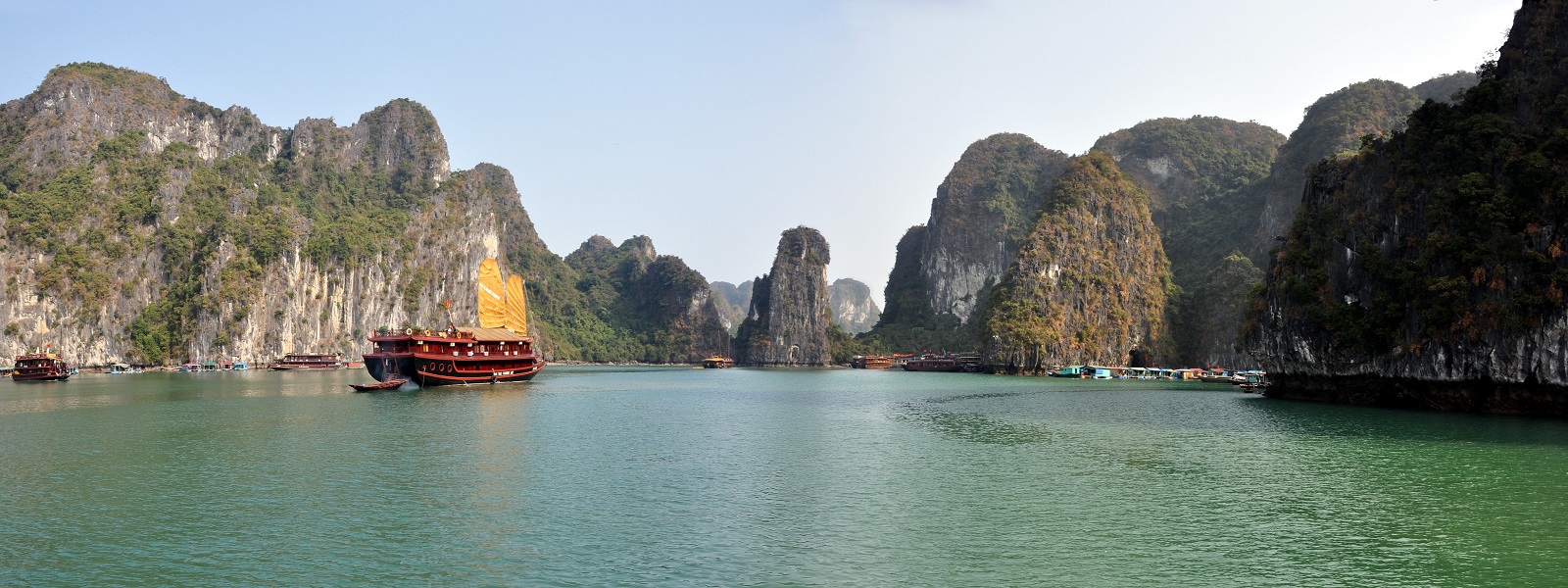
Its isolation has allowed a traditional way of life to thrive in a way that you wouldn’t expect so close to the capital city.
Mai Chau is the heart of a beautiful valley that is a world away from the hustle and bustle of Hanoi. The modern village is an unappealing sprawl, but as you emerge on the rice fields and rural living it is transformed into a real paradise. Nestled in a valley amongst verdant hills in the northwestern highlands, stunning scenery in Mai Chau offers excellent opportunities for trekking and mountain biking while providing a glimpse into the village life of the H’mong and White Thai ethnic hill tribes.
Climate:
The climate of Mai Chau, Hoa Binh is tropical monsoon. The average annual temperature is 18°C with a maximum of 29°C in July and a minimum of 16°C in January. In spring Mai Chau is a bright, almost parrot-green and by autumn this green transforms into golden hues as the rice approaches harvest.
Best time to visit:
For hot (but not too hot), sunny weather, October - November and February - May are the best time to go.
Getting here:
Mai Chau is a 4-hour- drive from Hanoi. Although the drive can be strenuous due to the mountainous roads, it does offer a good view of the countryside.
Vietnam has a tropical monsoon climate, dominated by the south or southwesterly monsoon from May to September and the northeast monsoon from October to April. The southern summer monsoon brings rain to the two deltas and west-facing slopes, while the cold winter monsoon picks up moisture over the Gulf of Tonkin and dumps it along the central coast and the eastern edge of the central highlands. Within this basic pattern there are marked differences according to altitude and latitude; temperatures in the south remain equable all year round, while the north experiences distinct seasonal variations.
In the past few years Vietnamese food has become more and more popular around the world. Food lovers may have tried the two best known Vietnamese dishes – spring rolls and bread rolls. Rice, noodles, fresh vegetable and herbs all play big roles in Vietnamese food, making it one of the healthiest cuisines in the world.
In Vietnam you’ll discover one unmistakable fact: Vietnamese people love noodles. They eat them every day, sometimes for every meal. Vietnamese noodles are made from a few basic ingredients, the most common being rice, wheat and mung beans, but a whole sub-cuisine is built on these basics.
91,500,000
Hanoi
Vietnamese
Voltage: 127V/ 220V, Frequency: 50Hz



We saw, learned, heard, tasted a lot and really got to know these 2 countries better. Thanks a lot for organizing our tour.
Mr Denis
My husband and I are now home and we'd like to thank you for an extraordinary trip in Vietnam and Cambodia. Thu, you did a terrific job in planning it and all details were perfect and everything happened like clockwork. We loved...
Fran O’Connell
We just got back. I can't begin to tell you how wonderful it was. We loved every place we stayed. You're a gem. As to the countries themselves: I was totally thrilled, fascinated, absorbed. Hope to do another trip to the...
Loraine F. Gardner
I wanted to specifically tell you how wonderful my tour guide Tien from Hue was. We were lucky enough to have him for Hue, Danang and Hoi An. He was sweet, caring, knowledgeable, dedicated and passionate about his country. I felt...
Dr. Halli Zung